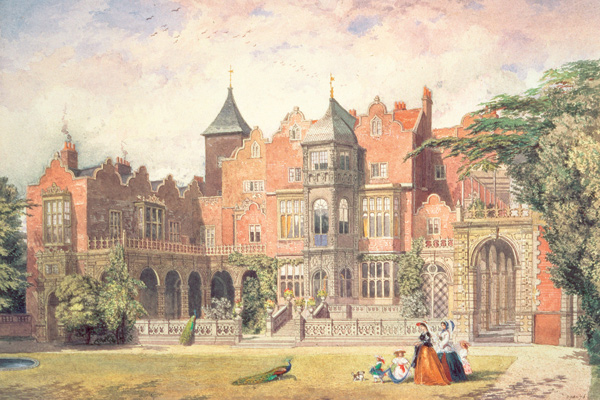Holland House, which was bombed in 1940, was a large, rambling Jacobean mansion off Kensington High Street. In 1800 it was still in the country, surrounded by leafy woods and fields. Here Lord Holland and his wife Lady Holland created a glittering and influential salon. For over 30 years before the 1832 Reform Act, Holland House was the headquarters of the Whig party. Lord Holland was the nephew of Charles James Fox, and at Holland House the Whig aristocracy — ‘they are all cousins’, as someone said — dined and talked and plotted. An intellectual nerve centre, Holland House was the place where the new men with the new thinking from Scotland met and influenced the Whigs. Byron was a favourite, and it was at Holland House that he first met Lady Caroline Lamb. The cut-throat wit Sidney Smith was a permanent fixture, and Sheridan got drunk there.
Salons are organised and orchestrated by women and, as Linda Kelly shows in this enjoyable book, Lady Holland was considerably larger than life. The heiress to a West Indian sugar fortune — it’s a nice irony that the progressive Whigs were fuelled by money made from slavery — she was married at 15 to a much older husband, Sir Godfrey Webster. At 23, a beauty with brains, she created a scandal when she left Webster and went off with Lord Holland, a youth of 20 whom she met in Italy where he was on the Grand Tour. As a divorced woman, Lady Holland could never be received at court and she was cold-shouldered by stuffy London society. This was one reason why she started her own salon and entertained at Holland House.
As she grew older, she became sharp-tongued and imperious, dictating to her guests and treating her librarian, a gentleman named Mr Allen, as though he was a ‘negro slave’. ‘Ring the bell,’ she once told Sidney Smith. ‘Oh yes,’ he replied, ‘and shall I sweep the floor as well?’ Caroline Lamb, the daughter of Lady Holland’s best friend Lady Bessborough, pilloried her in the novel Glenarvon as the haughty Princess of Madagascar, and Holland House did indeed function as a sort of court with Lady Holland playing the part of an irritable, warm-hearted queen. She was a domineering mother, and both her sons fled and lived abroad. But though people grumbled and ridiculed her, no one refused the highly prized invitations to her dinners.
Lord Holland was devoted to her. On her 60th birthday he wrote:
I loved you much at twenty-four
I love you better at three score.
Holland himself was a sweet-natured, untidy, shaggy-eyebrowed man, of ‘artless, almost childish simplicity’. He was immensely well read, and he collected a library of 10,000 volumes. Cut-and-thrust parliamentary debate was not his style, but his role in Whig politics was almost as important in its way as that of his flamboyant uncle, Charles James Fox, of whom he was very fond. Holland acted as host for his uncle’s Whig dinners, and after Fox’s death in 1806 the house became a shrine to Fox, whose statue sat in the hall. Holland’s dinners kept the Whig party alive during long years of opposition, and by opening his doors to new talent and new ideas, he ensured that the party didn’t stand still.
The role of the salon, especially in pre-revolutionary France, is a hot historical topic. Following the German sociologist Jurgen Habermas, academic historians today see the salon as a bourgeois public sphere: a socially inclusive public-private space where ideas could be discussed outside the control of the authorities. The salon was pivotal in the spread of Enlightenment ideas in France, and in some ways Holland House performed the same role in Britain, acting as a conduit for the ideas of the Scottish Enlightenment.
The Hollands were cosmopolitan Francophiles. They visited Paris often, and Lady Holland held soirées there. Talleyrand was a regular guest at Holland House, and Madame de Stael often dined there, though Lady Holland disliked her. Lady Holland was a fan of Napoleon, and sent him parcels of books and sugared plums to enliven his exile on St Helena.
Linda Kelly is not a historian in the Habermas mould, and this is not a book about the theory of the public sphere. For that we should be thankful. She is deeply knowledgeable about Whig society, and in this sparkling account she vividly conveys a sense of what Holland House was actually like. Her portraits of Lord and Lady Holland are affectionate, funny and unforgettable.






Comments